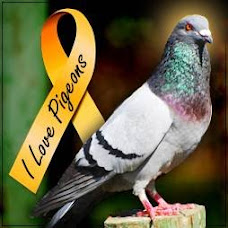Military
In the late 19th and early 20th century, homing pigeons were frequently used as message carriers within European battle zones. Equipped with a small message capsule, pigeons would carry messages between troops and allies, alerting people if soldiers were captured behind enemy lines. They would also provide important time sensitive information that couldn't be sent by other means. Pigeons were hard to detect, difficult to shoot down, and fast commuters.
In 1903, German Engineer Julius Neubronner combined a small analogue camera with a mechanical timer and attached it around a pigeon's neck. This innovative approach to aerial photography soon raised interest from the German military. Shortly thereafter, exploring the potential for secret aerial photography carried out by pigeons began in earnest.
By Word War II entire "Pigeon Corps" had been established, serving both the Army and Air Force of several countries including England, Germany, France and the United States. Pigeon fanciers were consulted and encouraged to donate special breeds, and to provide expertise in pigeon handling and training to the military. Collaborations between pigeon fanciers and military personnel started to occur more frequently. In fact, the human pigeon handlers dedicated to the war messaging service became fondly known as the "Pigeoneers" by American forces.
Several decades later during the Vietnam War, the US Military developed a small radio-tracking device for attaching to homing pigeons. The idea was to capture the birds belonging to the Vietkong and follow their flight path home. Knowing the pigeons’ destination would help the US find hidden enemy camps. Pigeons have continued to be used in military and other governmental efforts. More recent examples include their alleged use by Iraqi troops during the second gulf war in 1991, and as discussed briefly below, as messengers for the Indian police in the state of Orissa, and to traffic illicit goods across state borders in South Africa, Pakistan, Afghanistan, Mexico and the US.
Police
The state of Orissa in India has used homing pigeons as part of their police service for over sixty years. This remote state used messenger pigeons to send reports throughout the state and to the country's capital during floods and other environmental conditions that cut the region off from other means of communication. The pigeon courier service or "P-mail" was handed to the police by the army in 1946, one year prior to India's independence from England. In 2002 it was decided that the pigeon courier service was too costly for the state and that email would be a more efficient way of communicating in contemporary India.
Trafficking
While homing pigeons have largely been retired from official governmental and military purposes, they are still being used for less official underground activities such as transporting small amounts of precious goods across country borders. In South Africa, pigeons are reportedly used to smuggle diamonds out of the country, in Afghanistan, pigeons assist in sending small portions of heroin over to Pakistan, and in the United States pigeon-enhanced drug trafficking between the US-Mexican border continues to flourish.
Civic
According to the International Harold Tribune, pigeons continue to be used in remote parts of Britain and France to carry blood samples from one location to another.
Subscribe to:
Post Comments (Atom)












No comments:
Post a Comment